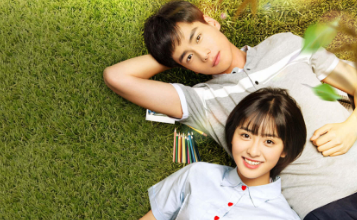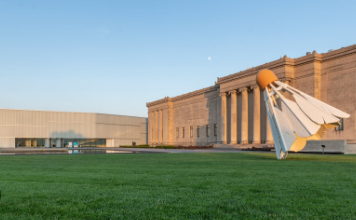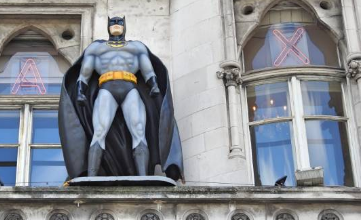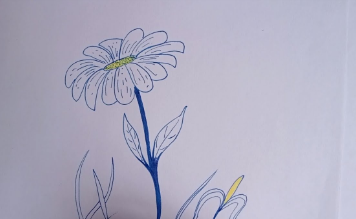mujer:8u_hyznz17w= imagenes: An Exploration of Female Representation in Art and Media
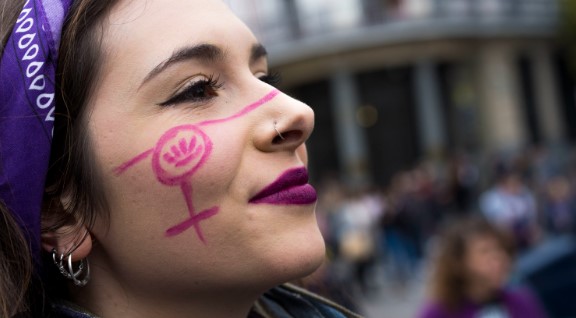
Introduction to mujer:8u_hyznz17w= imagenes
The depiction of women in art, known as “mujer:8u_hyznz17w= imagenes” is a reflection of societal values, cultural narratives, and evolving perceptions of femininity. Women have been a central subject in various art forms, from ancient cave paintings to modern digital media. These images not only capture the beauty and essence of womanhood but also challenge societal norms and stereotypes. As we delve into the world of “mujer:8u_hyznz17w= imagenes” we uncover the multifaceted ways in which women have been represented, revered, and reimagined across different periods and cultures.
Historical Representation of Women
The history of female imagery is as old as art itself. From the Venus figurines of prehistoric times to the grand portraits of the Renaissance, the representation of women has evolved, reflecting changes in society, religion, and politics. Understanding this evolution is key to appreciating the complexities of how women have been viewed and portrayed throughout history.
Women in Classical Art
In classical art, women were often depicted as goddesses, saints, or muses, embodying ideals of beauty, virtue, and grace. The Renaissance period, in particular, is renowned for its portrayal of iconic female figures, such as the Virgin Mary and Venus. These representations were not merely aesthetic but also carried deep symbolic meanings, often influenced by religious and philosophical ideals of the time.
Iconic Female Figures in Renaissance Art
The Renaissance was a golden age for the depiction of women in art. Artists like Leonardo da Vinci, Michelangelo, and Botticelli created some of the most enduring images of women. “The Birth of Venus” by Botticelli, for example, symbolizes not just physical beauty but also spiritual and intellectual purity.
Baroque Art and Female Representation
The Baroque period introduced more dynamic and emotional portrayals of women. Artists like Caravaggio and Rubens depicted women with a heightened sense of drama, often emphasizing their emotional depth and humanity. These works often explored themes of power, vulnerability, and sensuality, offering a more complex view of female identity.
Women in Modern Art
The 20th century brought a radical shift in the portrayal of women, influenced by social changes, feminist movements, and the advent of modernism. Women were no longer just subjects of art but also creators, challenging traditional norms and redefining female representation.
The Role of Women in 20th Century Art Movements
Movements like Cubism, Surrealism, and Abstract Expressionism saw the emergence of women as both muses and creators. Artists like Frida Kahlo and Georgia O’Keeffe used their work to explore personal and political themes, offering new perspectives on female identity.
Contemporary Female Artists
Today, women continue to push boundaries in the art world. Contemporary female artists like Yayoi Kusama, Cindy Sherman, and Kara Walker explore issues of gender, identity, and power, often using their work to challenge societal norms and provoke thought.
Photography and the Female Form
Photography has played a crucial role in shaping the modern representation of women. From the pioneering work of early female photographers to contemporary trends in portraiture, the camera has been a powerful tool in capturing the diverse realities of womanhood.
Pioneering Female Photographers
Women like Dorothea Lange and Diane Arbus broke new ground in photography, using their cameras to document the lives of women and other marginalized groups. Their work offered a raw and unfiltered view of society, challenging the often idealized images of women in traditional art.
Modern Trends in Female Portraiture
Today, female portraiture is more diverse than ever, reflecting the complex realities of modern womanhood. Photographers explore a wide range of themes, from identity and body image to motherhood and aging, offering a more nuanced and authentic portrayal of women.
Women in Digital Art
The rise of digital art has opened up new possibilities for representing women. Digital illustration, social media, and other forms of digital expression have allowed for more diverse and inclusive portrayals of women, often challenging traditional norms and stereotypes.
Digital Illustration and Female Representation
Digital artists are using new tools to create vibrant and dynamic images of women, often blending traditional artistic techniques with modern technology. These works often explore themes of empowerment, diversity, and self-expression, offering a fresh take on female imagery.
The Role of Social Media in Popularizing Women’s Imagery
Social media platforms like Instagram have become powerful spaces for female artists and creators to share their work and connect with audiences. These platforms have democratized the art world, allowing for more diverse and inclusive representations of women.
Cultural Perspectives on Female Images
The representation of women in art varies greatly across cultures, reflecting different values, beliefs, and traditions. Exploring these cultural perspectives offers a deeper understanding of the many ways in which women are viewed and depicted around the world.
Depictions of Women in Eastern Art
In Eastern art, women are often depicted in connection with nature, spirituality, and the divine. From the graceful figures of Japanese ukiyo-e to the powerful goddesses of Hindu art, these images reflect a deep reverence for femininity.
Women in African Art Forms
African art often portrays women as symbols of fertility, wisdom, and strength. These images are deeply rooted in the cultural and spiritual traditions of various African communities, offering a unique perspective on female identity.
The Female Form in Latin American Art
Latin American art is rich with depictions of women, often reflecting the region’s complex history and diverse cultural influences. From the powerful female figures in Mexican muralism to the vibrant portraits of women in contemporary Latin American art, these images offer a powerful commentary on gender, identity, and social issues.
Impact of Feminism on mujer:8u_hyznz17w= imagenes
Feminist movements have had a profound impact on the representation of women in art, challenging traditional norms and promoting more diverse and inclusive portrayals of women.
Feminist Art Movements
Feminist art movements in the 1970s and 1980s sought to reclaim female imagery from the male gaze and promote a more authentic and empowered representation of women. Artists like Judy Chicago and Barbara Kruger used their work to challenge patriarchal norms and highlight issues of gender and power.
Redefining Beauty Standards
Feminist art has also played a key role in challenging traditional beauty standards, promoting a more diverse and inclusive vision of female beauty. This has led to a broader representation of women in art, reflecting the diverse realities of womanhood.
Representation of Women in Media
The portrayal of women in media has a significant impact on societal perceptions of gender and identity. From cinema to advertising, the way women are depicted in media reflects and shapes cultural norms and values.
The Portrayal of Women in Cinema
Cinema has a long history of depicting women in various roles, from damsels in distress to empowered heroines. The portrayal of women in film has evolved over time, reflecting changes in societal attitudes towards gender and identity.
Women in Advertising
Advertising is another powerful medium that shapes perceptions of women. While traditional advertising often relied on stereotypes and objectification, there has been a growing movement towards more positive and empowering representations of women in recent years.
Ethical Considerations
The depiction of women in art and media raises important ethical questions about representation, objectification, and the impact of gender stereotypes.
The Ethics of Depicting Women
Artists and creators have a responsibility to consider the ethical implications of their work, particularly when it comes to depicting women. This involves being mindful of the potential for objectification and stereotyping, and striving to create more respectful and empowering representations of women.
Gender Stereotypes and Their Impact
Gender stereotypes in art and media can have a significant impact on societal attitudes towards women, often reinforcing harmful norms and limiting the possibilities for diverse and inclusive representations of women.
The Future of Female Imagery
As technology continues to evolve, so too will the ways in which women are represented in art and media. From virtual reality to AI-generated images, the future of female imagery is full of exciting possibilities.
Trends in Virtual and Augmented Reality
Virtual and augmented reality offer new opportunities for representing women in more immersive and interactive ways. These technologies have the potential to create more dynamic and engaging portrayals of women, pushing the boundaries of traditional art forms.
The Evolution of AI-Generated Female Images
AI is playing an increasingly important role in the creation of female imagery, offering new possibilities for representation but also raising important ethical questions about authenticity, consent, and the potential for bias.
How to Create Empowering Female Images
Creating empowering images of women requires a thoughtful and intentional approach, balancing authenticity and creativity with a deep understanding of the complexities of female identity.
Techniques for Capturing the Essence of Womanhood
When creating images of women, it’s important to focus on capturing the essence of womanhood in all its diversity. This involves using techniques that highlight the strength, beauty, and individuality of women, while also being mindful of the potential for objectification and stereotyping.
Balancing Authenticity and Creativity
Balancing authenticity and creativity is key to creating empowering female images. This involves staying true to the realities of women’s experiences while also pushing the boundaries of artistic expression.
Challenges in Depicting Women
Depicting women in art and media is not without its challenges. From overcoming objectification to ensuring diverse representation, artists and creators must navigate a complex landscape of ethical and aesthetic considerations.
Overcoming Objectification
One of the biggest challenges in depicting women is overcoming the tendency to objectify the female form. This requires a conscious effort to create images that are respectful, empowering, and reflective of the full humanity of women.
Ensuring Diverse Representation
Diverse representation is crucial to creating a more inclusive and accurate portrayal of women in art and media. This involves being mindful of the many different experiences and identities that women embody, and striving to reflect this diversity in creative work.
Conclusion
The representation of women in art and media is a powerful reflection of societal values, cultural narratives, and evolving perceptions of gender. As we continue to explore and redefine “mujer:8u_hyznz17w= imagenes” it’s important to remain mindful of the ethical implications of this work, and to strive for more diverse, inclusive, and empowering representations of women.
FAQs on Mujer Imágenes
Why is the representation of mujer:8u_hyznz17w= imagenes?
The representation of women in art is important because it reflects and shapes societal attitudes towards gender, identity, and power. It can challenge stereotypes, promote diversity, and offer new perspectives on the role of women in society.
How have feminist movements influenced female imagery?
Feminist movements have had a profound impact on female imagery, challenging traditional norms and promoting more diverse and inclusive representations of women. They have also played a key role in redefining beauty standards and advocating for the empowerment of women through art.
What role does culture play in the depiction of women?
Culture plays a significant role in the depiction of women, influencing the themes, styles, and symbols used to represent women in art. Different cultures have different values and beliefs about femininity, which are reflected in the way women are portrayed in art.
What are the challenges in creating diverse female images?
One of the biggest challenges in creating diverse female images is overcoming stereotypes and biases that limit the possibilities for representation. This requires a conscious effort to be inclusive and to reflect the full range of experiences and identities that women embody.
How is digital art changing the portrayal of women?
Digital art is changing the portrayal of women by offering new tools and platforms for representation. It allows for more diverse and dynamic images of women, and has the potential to challenge traditional norms and push the boundaries of artistic expression.
What is the future of female representation in art and media?
The future of female representation in art and media is likely to be shaped by new technologies like virtual reality and AI, which offer exciting possibilities for more immersive and interactive portrayals of women. However, it will also require ongoing efforts to address ethical issues and ensure diverse and inclusive representation.

